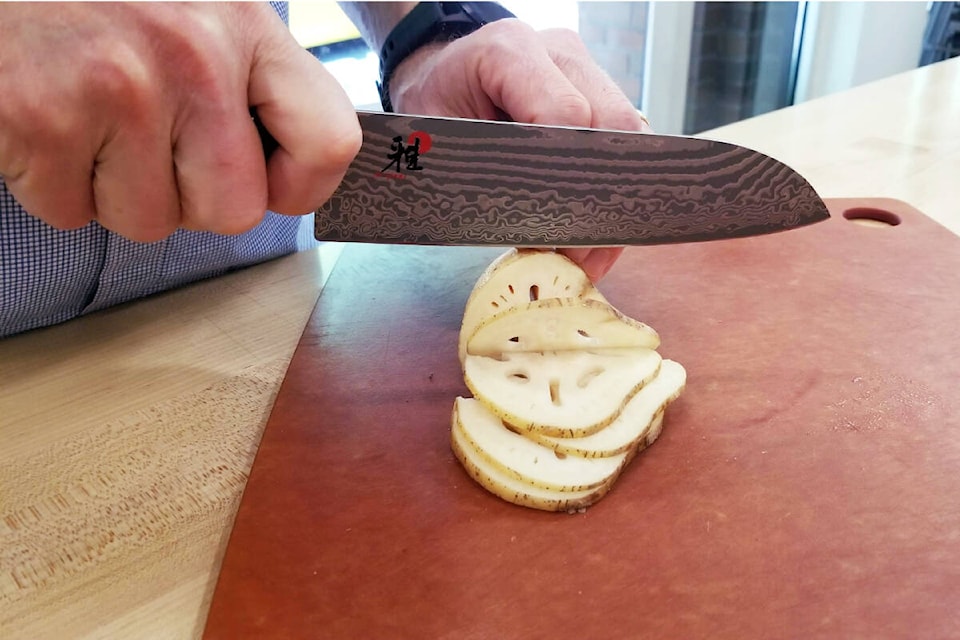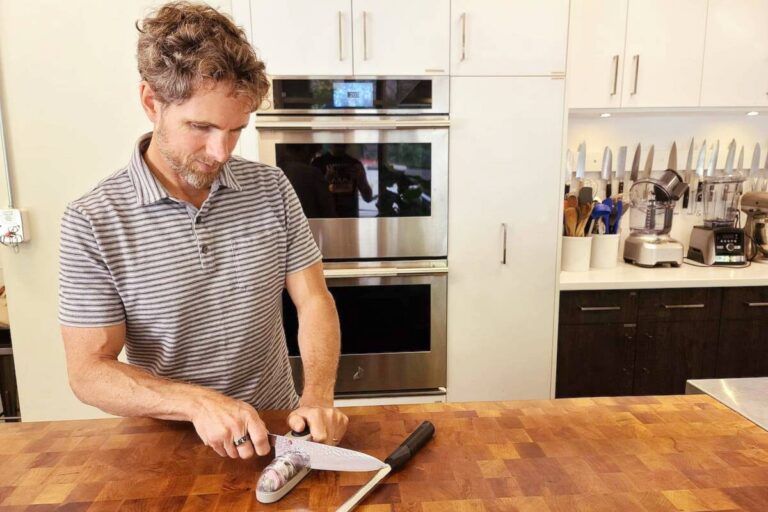CookCulture's Jed Grieve reveals the secrets to choosing and caring for the perfect knife
From the Bronze Age 1,200 years ago through the transition to the Steel Age, the making of Japanese swords and knives was as much an art as it was a science.
“Japanese knives are made in much the same way,” says Jed Grieve of Cook Culture.
In order to collect iron sand, one of the raw materials for steel, the Japanese intentionally changed the flow of rivers and collected the sand that accumulated in places where the flow direction and speed changed.
They also discovered that by adding carbon to iron and melting it with charcoal at temperatures of up to 1,500 degrees, an incredibly strong alloy, steel, was created.
Once a block of steel is created, it is sent to a blacksmith where it is heated in a forge and hammered multiple times to oxidize it and improve the grain structure, making it stronger and more durable.
The blade goes through multiple grinding and sharpening stages to refine the shape and create a smooth, sharp edge, a process that is typically done by hand to ensure precision and consistency.
On the other hand, the handle is manufactured separately.
Although certain processes have become more automated over the years (sometimes using electric hammers and bellows), it is still very much an artisanal craft, and many knife products are still made by hand around the world.
Just as a well-crafted sword makes its owner feel powerful and appreciate the work that went into it, so too can a proper kitchen knife, and Grieve explained to Black Press Media why investing in the right knives and the tools to care for them is worth it:
Related article: Slowly…and Even Slower
Why is it worth having a good knife?
For starters, a good knife will have a reasonably hard blade, which makes cutting much easier (and cooking more enjoyable), says Grieve.
But you also get a sense of pride in the way it feels in your hand and how beautiful it looks. A good knife is also relatively easy to maintain and sharpen.
If you could only have one knife in your kitchen, what would it be?
While the most popular knife in the Western world is the 8-inch French chef's knife, Grieve said many of his clients prefer the Japanese Santoku knife, which means three virtues in Japanese and refers to the knife's ability to cut fish, meat and vegetables with equal skill.
With a shorter, thinner, narrower blade, Santoku knives excel at precision cutting tasks, allowing you to slice, dice, and mince vegetables, meat, and fish more smoothly and with more control. The curved blade and light weight make them easy to maneuver, providing a comfortable grip and greater dexterity for users with smaller hands or those accustomed to Japanese cooking techniques. This may make cutting vegetables more fun, and you might even end up eating more of them, says Grieve, which is always a good thing.

What should you look out for when buying a good knife?
When buying a knife, Grieve recommends ignoring the brand's gibberish and consulting a trusted retailer to better understand your best options, and trying out knives is an important part of the buying process.
“Once you know the range of knives you can afford, grab a knife,” Grieve says. “The knife may be technically impressive, but if you can't relate to it, it's worthless,” he says.
How much do you need?
Grieve says you can get a decent knife made from durable, high-quality steel for between $50 and $70.
But if you can afford it, he says, there's good reason to spend more: It means a sharper blade, better looks and craftsmanship, and it can also be a luxury item you can be proud of.
“When your friends come over, you feel proud of this amazing, handmade, high-carbon, beautiful Japanese cutlery, and you know how to store it and take care of it. It's no different than the wine you take out or the Kobe beef you buy. It's all on the same level of really loving cooking.”
Carbon or stainless steel?
Knives with a higher carbon content are easier to sharpen and last longer, but they also require more careful maintenance to prevent oxidation. In general, stainless steel knives are preferred because they are less prone to rust and easier to care for, says Grieve.
However, high carbon steel blades, especially traditional French chef knives, perform well and are highly sought after due to their history and craftsmanship. While old French knives often feature high carbon steel, modern high carbon steel blades are more commonly associated with Japanese knife-making techniques, showcasing the unique beauty of Damascus patterns and dark tones.
How to keep your knives sharp
Whether you spend $50 or $1,000 on a knife, “it's important to keep your knives sharp.”
“When purchasing a knife, it's absolutely important to budget for the care of that tool and understand from the seller how best to maintain the knife,” he said, “so you can keep it in as good condition as it was on day one.”
The edge of a knife is as delicate as a million pinheads lined up in a row, so you can imagine what would happen to that delicate edge if you slammed it against a chopping board. Using the edge of your knife to pull food off the board towards you is a big no-no, says Grieve.
To maintain the original sharpness of your knife, you have a few options.
The horner is a maintenance tool used by chefs, who rub the blade up and down with the horner rod between uses to align and clean the blade.
These are too cumbersome for most people, so Grieve recommends a pull-through sharpener for the average user.
“A quality pull-through is a really good investment,” he says, with prices ranging from $50 to $100.
“Stay within your budget. If your budget is $200, I'd recommend spending $150 on the knife and $50 on the Honer or pull-through.”
Additionally, Grieve recommends having your knives professionally sharpened every six to eight months, or purchasing an electric sharpener or whetstone (though most people don't generally like to sharpen their own knives).
“Don't spend money on a knife if you're not really going to maintain it. It's a waste. It's like buying a car and never changing the oil.”


